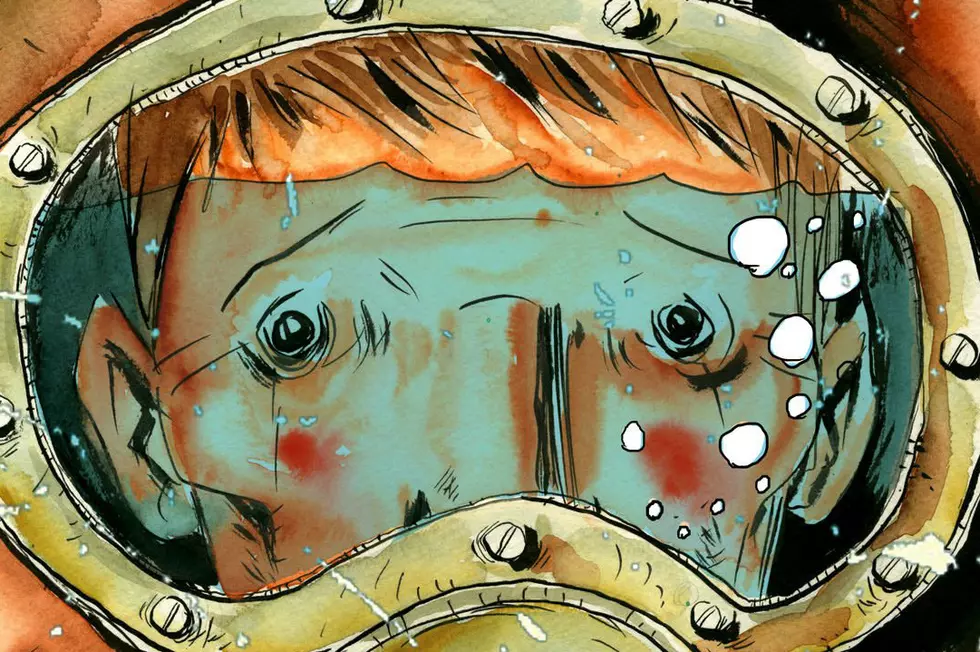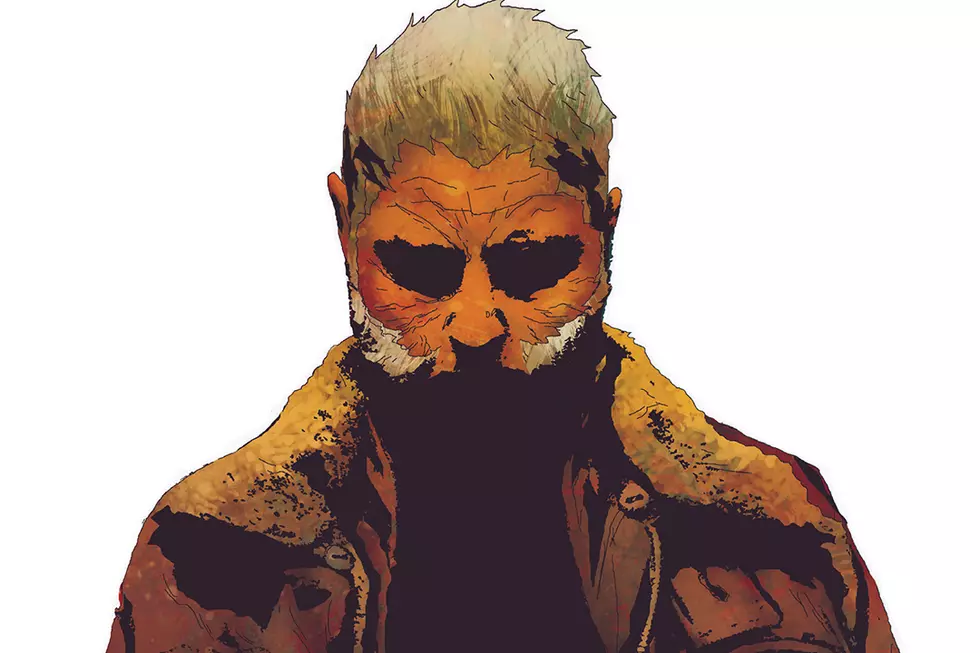
Mixed Nuts: Creators Pay Tribute To Charles Schulz With Unique ‘Peanuts’ Anthology
From October 1950, when the very first installments of Peanuts was published, every single installment of the strip was drawn by Charles M. Schulz's own hand, and the only variations in the style of the characters' depictions came organically through the evolution of Schulz's own drawing style. Even when the characters have appeared outside their home strip, in various animated specials or in the Dell or Boom comic books, the animators and artists have closely aped Schulz's style.
That's what makes Boom Studios' new Peanuts: A Tribute to Charles M. Schulz so compelling. It's difficult to imagine what any other artist's version of the iconic characters might look like, but this book is full of them, and being faced with these characters divorced from their creator's designs is fascinating and at times even disconcerting. It's hard to look at the realistic image of Charlie Brown by Ryan Sook on the cover of the book, staring into the eyes of the "real" Charlie Brown, and not be a little freaked out, isn't it?
Over 40 different artists pay tribute to Schulz and his creations, through their own cartoons and comics. As eclectic as the contributions are, they fall into a few rather broad categories.
Several artists supply pin-up style single images, like Sook, Mike Allred, Paige Braddock, Dan Hipp, Jeff Lemire, Tony Millionaire, Dustin Nguyen, and Jen Wang. Some have styles close enough to Schulz's that their versions of the characters look like fresh but familiar takes --- Paige Braddock draws Boom's Peanuts comic books, and does a perfect imitation of Schulz. Others might cause one to recoil with fear --- tempered by curiosity --- as in the contributions from Millionaire and Lemire.
Some contributors take the opportunity to do their version of a Peanuts strip in their own style, like a cover version. These include strips by Frank Cammuso, Zac Gorman, Dave Kellett, Keith Knight, Mike Kunkel, and Mo Willems.
And then there's a third kind, in which the artist think pretty far outside the box... or panels.
Perhaps the most striking of these is Evan Dorkin and Derek Charm's "It's The Great Old Ones, Charlie Brown," a 12-page Lovecraft/Schulz mash-up that finds a surprising, even shocking, number of parallels between the mythos of each writer --- with elements of the comic strip, when taken at face value, suggesting real and absolute horror. Charlie Brown writes to his pen pal about how there are no adults anywhere; he can sometimes hear their voices, but he can never see them. His dog acts more and more human as time passes. Kids age at various rates; Shermy disappeared and it's like no one remembers he ever existed. And so on.
Chris Schweizer hones in on a little-known (or even thought about) fact that he himself discovered while doing research for his own historical adventure comics. He became curious about the fact that so many Americans seemed so familiar with particular tropes and elements from adventure fiction set during World War I, despite the fact that films and stories set during the time had been fairly minor in their influence and have long since disappeared... until he realized that Schulz's running gag about Snoopy's imaginary battles against the Red Baron were likely the sole reason that, a century after the Great War, we still remember at least that front of it in some detail.
Roger Langridge, meanwhile, confessed hesitance to tackling the Peanuts characters proper, and came up with a clever way around it. He tells the four-page story of The Red Baron, who visits a psychiatrist, confessing that he's haunted by a white dog with black ears that no one can see but him.
Langridge talks about his story in a fairly massive "Contributors" section in the back, where each writer and artist gets a paragraph or six to discuss Schulz, his interactions with them, or their influence on them, and in some cases how they decided what to draw for this book.
Because Schulz is no longer with us, this section is evocative of a memorial service. Several of the contributions explicitly deal with a sense of yearning for lost childhood tied to Peanuts-related cultural touchstones, and these two elements combine to give the book an elegiac, occasionally melancholic feel. While, sometimes simultaneously, being hilarious and brilliantly drawn.
In other words, it's Peanuts --- even if it's Peanuts as you've never seen it before, and perhaps never will again.
More From ComicsAlliance
![Jughead Learns About The Internet In ‘Jughead’ #14 [Exclusive]](http://townsquare.media/site/622/files/2017/03/Jughead00.jpg?w=980&q=75)



![All The Image Comics Announcements From Emerald City Comic Con [ECCC ’17]](http://townsquare.media/site/622/files/2017/03/Image-Featured.png?w=980&q=75)

![Reggie’s In Charge But Dilton Is The Real Star In ‘Jughead’ #13 [Preview]](http://townsquare.media/site/622/files/2017/02/Jughead01.jpg?w=980&q=75)

![Show Up For Roll Call In Kibblesmith And Charm’s ‘Valiant High’ #1 [Exclusive Preview]](http://townsquare.media/site/622/files/2017/02/VH00.jpg?w=980&q=75)
